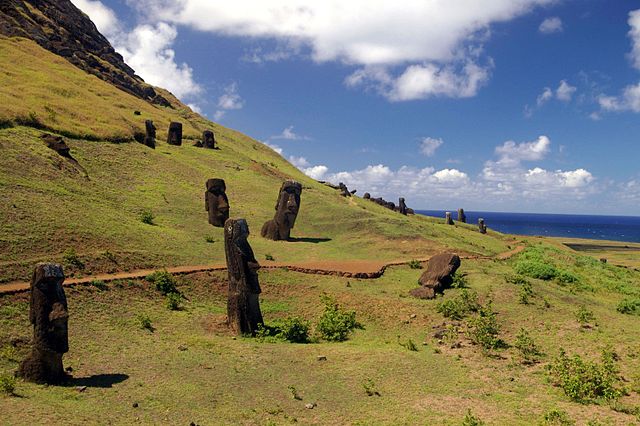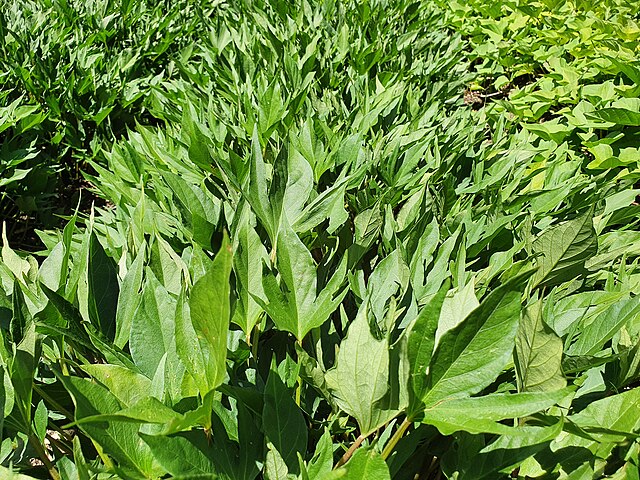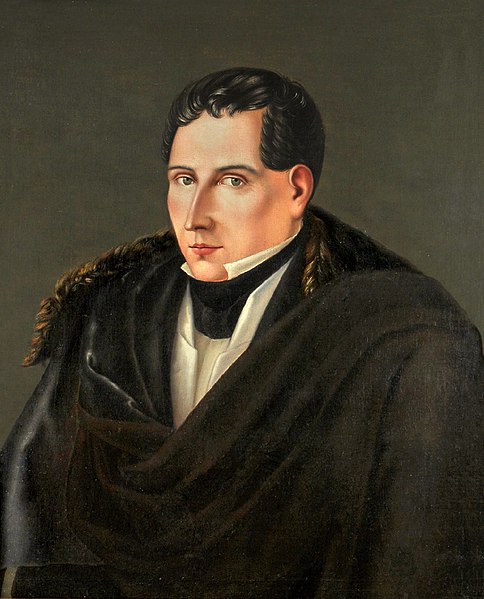Easter Island is an island and special territory of Chile in the southeastern Pacific Ocean, at the southeasternmost point of the Polynesian Triangle in Oceania. The island is most famous for its nearly 1,000 extant monumental statues, called moai, which were created by the early Rapa Nui people. In 1995, UNESCO named Easter Island a World Heritage Site, with much of the island protected within Rapa Nui National Park.
Outer slope of the Rano Raraku volcano, the quarry of the Moais with many uncompleted statues.
Moai at Rano Raraku, Easter Island
Traditional cultivars of sweet potato (kumara) were staple crops on Polynesian Rapa Nui
A View of the Monuments of Easter Island, Rapanui, c. 1775–1776 by William Hodges.
Chile, officially the Republic of Chile, is a country in western South America. It is the southernmost country in the world and the closest to Antarctica, stretching along a narrow strip of land between the Andes Mountains and the Pacific Ocean. With an area of 756,102 square kilometers (291,933 sq mi) and a population of 17.5 million as of 2017, Chile shares borders with Peru to the north, Bolivia to the northeast, Argentina to the east, and the Drake Passage to the south. The country also controls several Pacific islands, including Juan Fernández, Isla Salas y Gómez, Desventuradas, and Easter Island, and claims about 1,250,000 square kilometers (480,000 sq mi) of Antarctica as the Chilean Antarctic Territory. The capital and largest city of Chile is Santiago, and the national language is Spanish.
The Chinchorro mummies, the oldest of which are from around 5050 BCE.
Pedro Lira's 1888 painting of the founding of Santiago by Pedro de Valdivia at Huelén Hill.
Generals José de San Martín (left) and Bernardo O'Higgins (right) during the crossing of the Andes.
Painting of Diego Portales. The Constitution of 1833 has been seen as the embodiement of the "Portalian thought".








